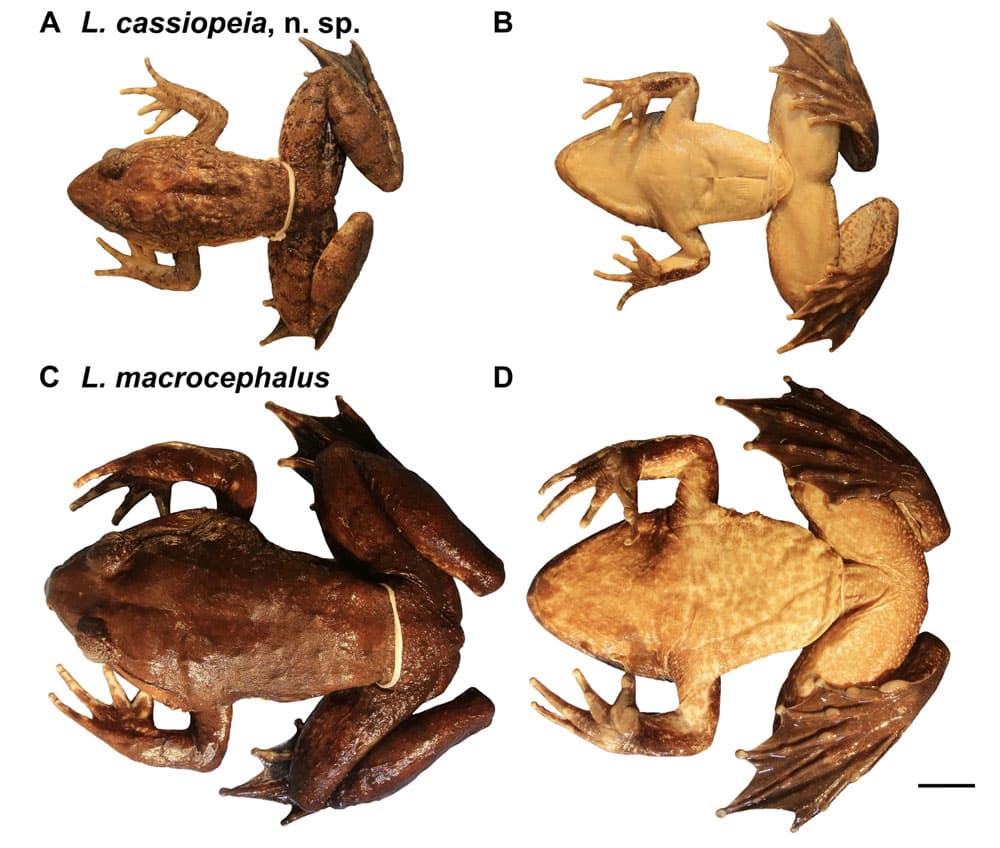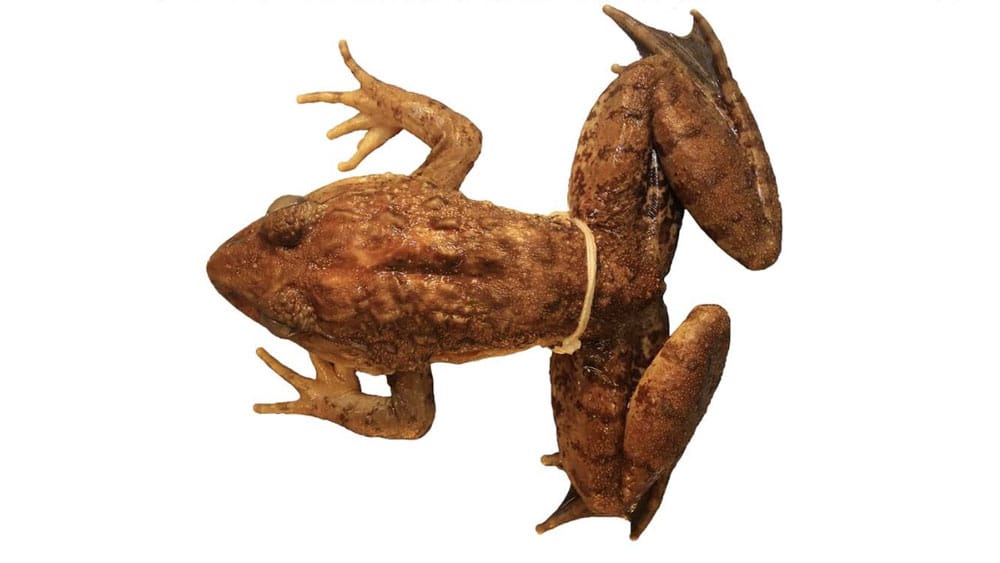The frog, Limnonectes cassiopeia has been collected more than 12 times over the last 20 years but were thought to be juveniles of the Luzon giant fanged frog.
A new species of fanged frog has been discovered in the Philippines on the main island of Luzon that is nearly identical to another frog species, but is not closely related. The frog, Limnonectes cassiopeia has been collected more than 12 times over the last 20 years but were thought to be juveniles of the Luzon giant fanged frog.
“They’re called that because the males of some species have large, bony protuberances, like fangs, in their lower jaw — it’s pretty unique,” lead author Mark Herr, doctoral student at the University of Kansas’ Biodiversity Institute and Natural History Museum said in a statement published on the University of Kansas website. “It’s still a bit of a mystery, but it’s become generally assumed that these fangs are used for male-to-male combat. The males’ fangs are much larger than the females’. These males have big heads, and a lot of these frogs can be huge — some as large as chickens elsewhere in Southeast Asia.”

Limnonectes cassiopeia, top, Limnonectes macrocephalus, bottom. Photo by Mark W. Herr, Hannah E. Som, Rafe M. Brown, University of Kansas
Herr first identified the new species as he conducted a genetic survey of Philippine fanged frogs, sequencing most of them to get a genetic dataset. Herr notes that Luzon island is known for two fanged from species: Limnonectes macrocephalus and Limnonectes woodworthi. But conducting the genetic analysis led Herr to discover a different group with a completely different genetic dataset. He then scrutinized museum specimens to come to the conclusion that the new frog was a species new to science.
New Fanged Frog Species Discovered in Indonesia
New Fanged Frog Species Discovered In The Philippines
“I verified my genetic work to ensure there were no mistakes, and there were none,” Herr said in the statement. “This led me to examine all the Limnonectes specimens from Luzon at the museum. We have hundreds of these frogs, and I carefully compared the 19 that had appeared in the new genetic cluster to those from the main cluster.”
When Herr looked at the toe pads of both Limnonectes macrocephalus and Limnonectes cassiopeia, he noticed that the toe pads of Limnonectes cassiopeia were smaller than Limnonectes macrocephalus and were white in coloration while the toe pads of Limnonectes macrocephalus were dark gray in coloration.
“Obviously, the giant macrocephalus frogs overlap in size because they all start out really tiny, and you wouldn’t be able to tell,” he said. “You’d just think these are all juvenile macrocephalus — that’s what everyone who had caught one had thought for the last 25 years. But I did some measurements to determine that once the males start to reach sexual maturity, they get these big, wider heads and develop huge fangs. Sometimes, when we consider their use of fangs for combat, we see some big male Limnonectes with scars on their heads, presumably injuries from fighting. And my analysis showed that the big heads start to show up on this new genetic cluster at an overall body smaller size.”
An abstract describing the new species. “A Long Overlooked New Species of Fanged Frog, Genus Limnonectes (Amphibia: Anura: Dicroglossidae), from Luzon Island, Northern Philippines” can be read on the BioOne website.



